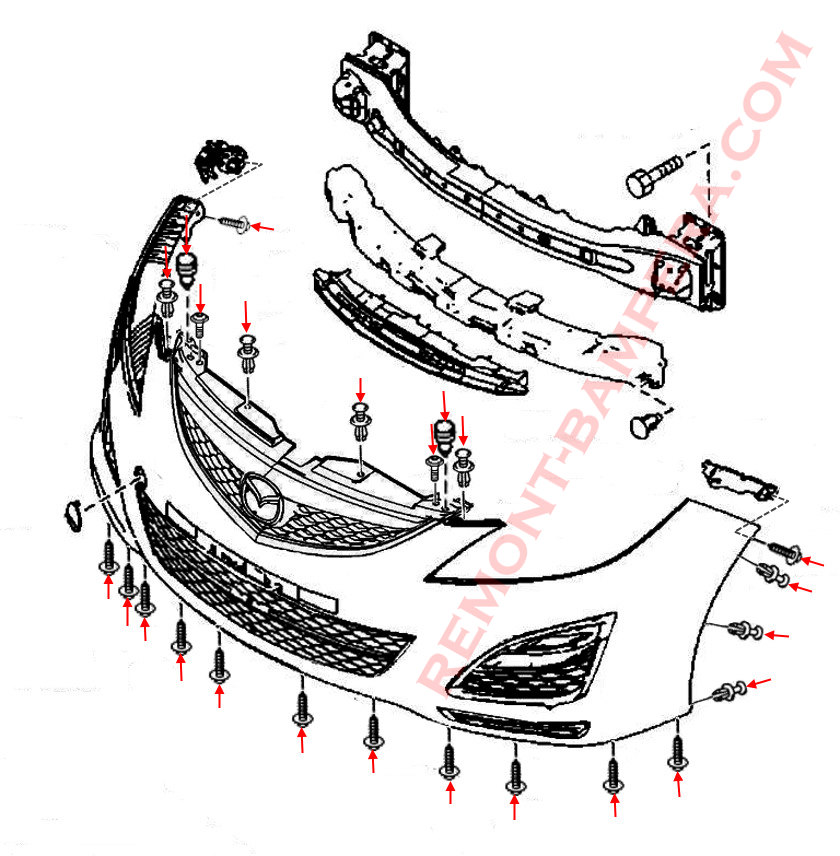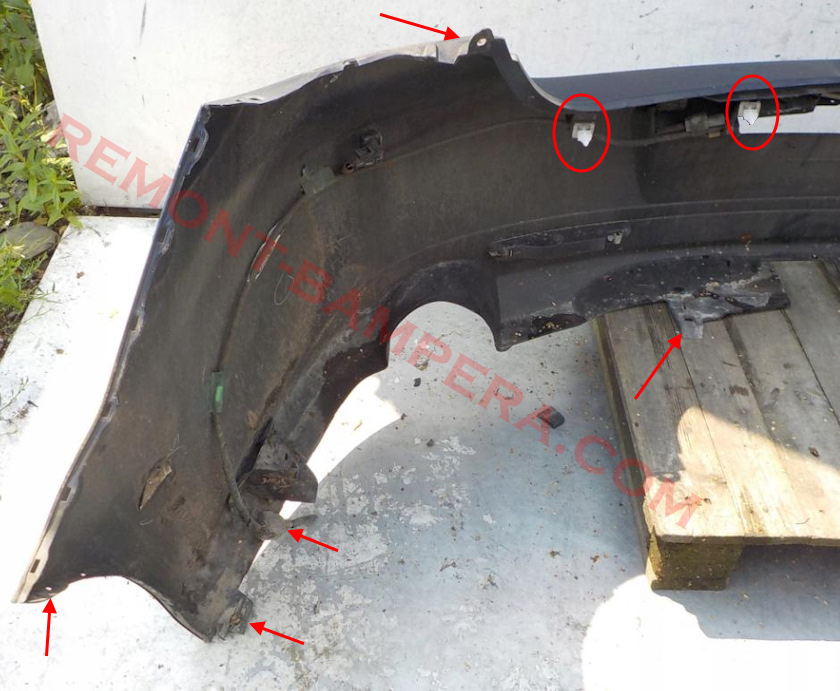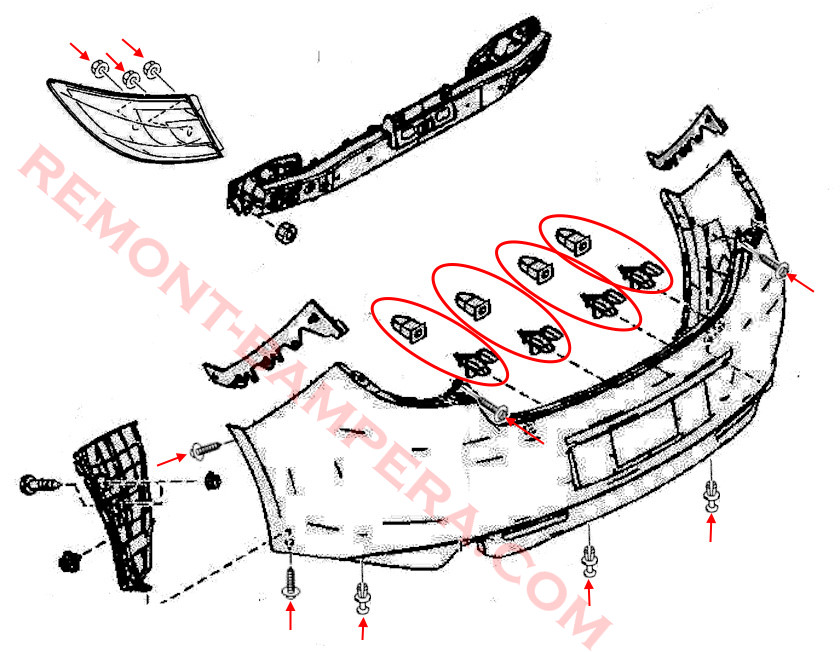Mazda 6 Mk2: Production Years, Model Code, Body Types, and Modifications
Production Years: The second generation of the Mazda 6 (known as Mk2 or GH) was produced from 2007 to 2012. In some countries, sales continued until 2013, when production of the third generation (GJ) began in 2012.
Model Code: The second-generation platform has the GH index. Additional designations were used depending on the body type:
- GH1 – sedan (4-door),
- GH2 – hatchback (5-door),
- GH3 – station wagon (5-door, also called Sport Wagon or Tourer).
Body Types and Modifications
The Mazda 6 Mk2 was offered in three body types, like the previous generation:
- Sedan (GH1) – a classic 4-door version with a spacious trunk (about 519 liters).
- Hatchback (GH2) – a 5-door version with a sportier design and a practical rear hatch.
- Station Wagon (GH3) – a family-friendly version with an expanded cargo area (up to 1,700 liters with the seats folded).
Engines and Transmissions:
- Gasoline:
- 1.8 MZR (120 hp) – base version for Europe,
- 2.0 MZR (145–150 hp),
- 2.5 MZR (170 hp) – primarily for the U.S. and Japan,
- 2.3 MZR DISI Turbo (260 hp) – high-performance Mazdaspeed6 version (AWD only, limited sales).
- Diesel (for the European market):
- 2.0 MZR-CD (140 hp),
- 2.2 MZR-CD (150–185 hp, depending on tuning).
- Transmissions:
- 5- and 6-speed manual gearboxes,
- 5- and 6-speed automatics (including Activematic).
Bumper Plastic Marking: >PP+(S22+T18)<
How to Remove the Front Bumper
- Open and secure the hood.
- Unscrew the two screws, remove the two push pins, and pull out the two clips securing the radiator grille (the grille can be removed).
- Remove the two clips securing the top of the bumper.
- Lie under the car and unscrew the twelve bolts securing the bottom of the bumper to the plastic underbody cover and fender liners.
- To avoid removing the wheels, turn them to the side.
- In the wheel arches, remove three clips per side securing the fender liners and unscrew one bolt per side securing the corners to the plastic brackets in the fenders.
- To release the clips in the fenders, pull the corners toward you.
- Release the clips at the top, above the headlights.
- (To avoid scratching the paint, it's best to do this with two people) Remove the front bumper by pulling it forward (ensure no wires or hoses are torn).
- Disconnect the electrical connectors (if present).
- Detach the washer fluid hose from the pump (fluid may leak).


How to Remove the Rear Bumper
- Open the trunk lid.
- Open the access panels in the side trunk trim.
- Under the panels, unscrew three nuts per side and remove the taillights.
- Under the taillights, unscrew one bolt per side.
- From underneath the car, remove four clips and unscrew two bolts securing the bottom of the bumper.
- Remove the mudguards (if installed).
- In the wheel arches, unscrew one bolt per side securing the corners to the plastic brackets in the fenders and free the fender liners.
- Release the clips in the fenders (pull the corners toward you).
- In the trunk opening, four alignment pins are secured in bushings. Pull them out to release the pins from the bushings. (Note: When reinstalling the bumper, first snap the pins into the bushings before securing the rest).
- (Two people are recommended) Carefully remove the rear bumper by pulling it backward (watch for wiring).
- Disconnect the electrical component connectors.


Model Overview
The second-generation Mazda 6 adopted a more aggressive Nagare ("flow") design language, which became Mazda's signature style in the late 2000s. The car appeared more dynamic than its predecessor thanks to sharp body lines, narrow headlights, and a large grille.
The interior was more spacious, with higher-quality materials. Top trims offered leather seats, dual-zone climate control, and a navigation system. Safety met Euro NCAP standards (5 stars in 2008).
Suspension: Independent setup (front MacPherson struts, rear multilink). Compared to the first generation (GG), engineers improved noise insulation and ride comfort.
Interesting Facts
- Mazdaspeed6 (Mazda 6 MPS) – the most powerful version with a 2.3L turbo engine and AWD. Only produced as a sedan (2006–2007), but sales were limited due to high fuel consumption and niche appeal.
- Special Editions: Europe got a "Sport Black" model with black wheels and exclusive trim. Japan had a "20B" rotary-engine version (for racing teams only).
- No SkyActiv Tech – unlike the third gen (GJ), the Mk2 used traditional MZR-series gasoline and diesel engines.
- Russian Market: The Mazda 6 GH was sold in Russia from 2008 but had moderate popularity due to its high price (vs. rivals like the Ford Mondeo).
- Racing Heritage: The Mazda 6 competed in endurance races like the 24 Hours of Nürburgring, proving its reliability.
Conclusion
The second-gen Mazda 6 (GH) balanced sportiness and comfort without being revolutionary. Its strengths included body style variety, reliable engines, and sleek styling. Today, it remains an affordable used car option, though outdated electronics and rust issues require attention when buying.

 English
English  Italiano
Italiano  Français
Français  русский
русский  Deutsch
Deutsch  Español
Español